Essential Arts: The memory of George Floyd lives on in murals
- Share via
Rather than asking how you are, I’m gonna co-opt an old Farsi greeting: May you not be tired. I’m Carolina A. Miranda, staff writer at the Los Angeles Times, with this week’s essential culture news — and healing dances.
Essential image

Art in honor of George Floyd and Black Lives Matter has popped up all over Los Angeles. The Times’ Dorany Pineda tracks down some of the pieces that have materialized on walls, barricades and construction fences. “It’s my way of speaking up,” says artist Misteralek of why he created his tribute to Floyd in Watts.
Times columnist Robin Abcarian reports on Jules Muck (the artist also known as MuckRock), who has peppered Venice with portraits of recent victims of police violence, including Floyd, Ahmaud Arbery and Tony McDade.
Make the most of L.A.
Get our guide to events and happenings in the SoCal arts scene. In your inbox once a week.
You may occasionally receive promotional content from the Los Angeles Times.
The names of people killed by police, woven out of colorful fabric, have materialized on a chain-link fence around the Silver Lake Reservoir. Deborah Vankin speaks to project co-organizer Eli Caplan: “If the reservoir was 10 times as big, we would still have an abundance of names left over.”
The uprisings and culture
Charles McNulty looks at how the moment is playing out in the world of theater. Playwrights of color wrote a public letter of protest that was signed by dozens of theatrical figures, including Suzan-Lori Parks, Viola Davis and Quiara Alegría Hudes. “We see you,” it reads. “We have always seen you. We have watched you pretend not to see us.” McNulty writes, “Much in the letter is necessary and overdue.”
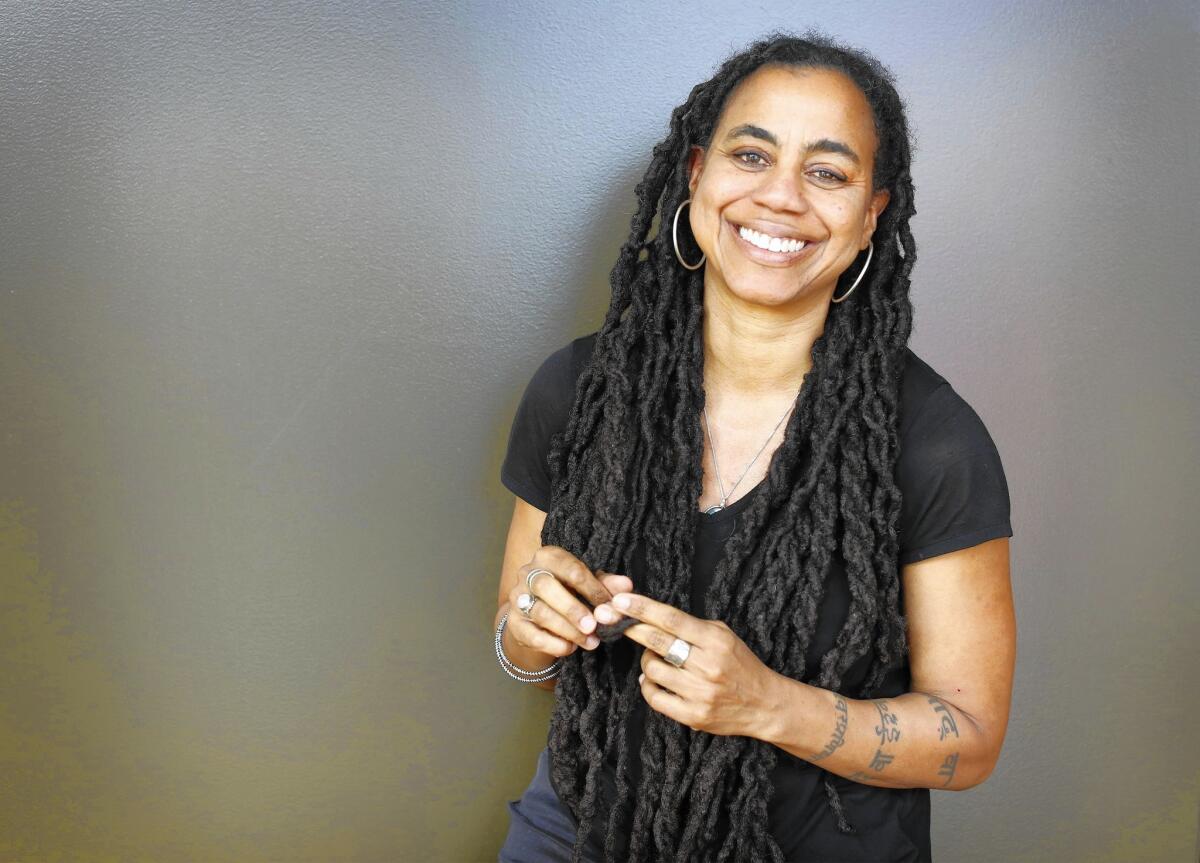
Marie Cisco, a producer who has worked for the National Black Theatre and the Public Theater in New York, created a public Google spreadsheet of institutions that were not speaking up in response to Floyd’s killing. But speaking up is not enough. “We need to see and hear detailed action steps,” she tells The Times’ Jessica Gelt.
L.A. choreographer Jacob Jonas has been taking heat for an Instagram post that shows a dancer bracing himself acrobatically on a police officer, accompanied by the statement: “it’s not white vs. black. It’s everyone against racists.” Culture writer Makeda Easter reports on the criticism he has received, including from David Mack, director of Invertigo Dance Theatre.
Times writer Daniel Hernandez examines seven rapid cultural shifts that have happened since the killing of George Floyd. Chief among them: the shift from “nonracist” to “antiracist.”
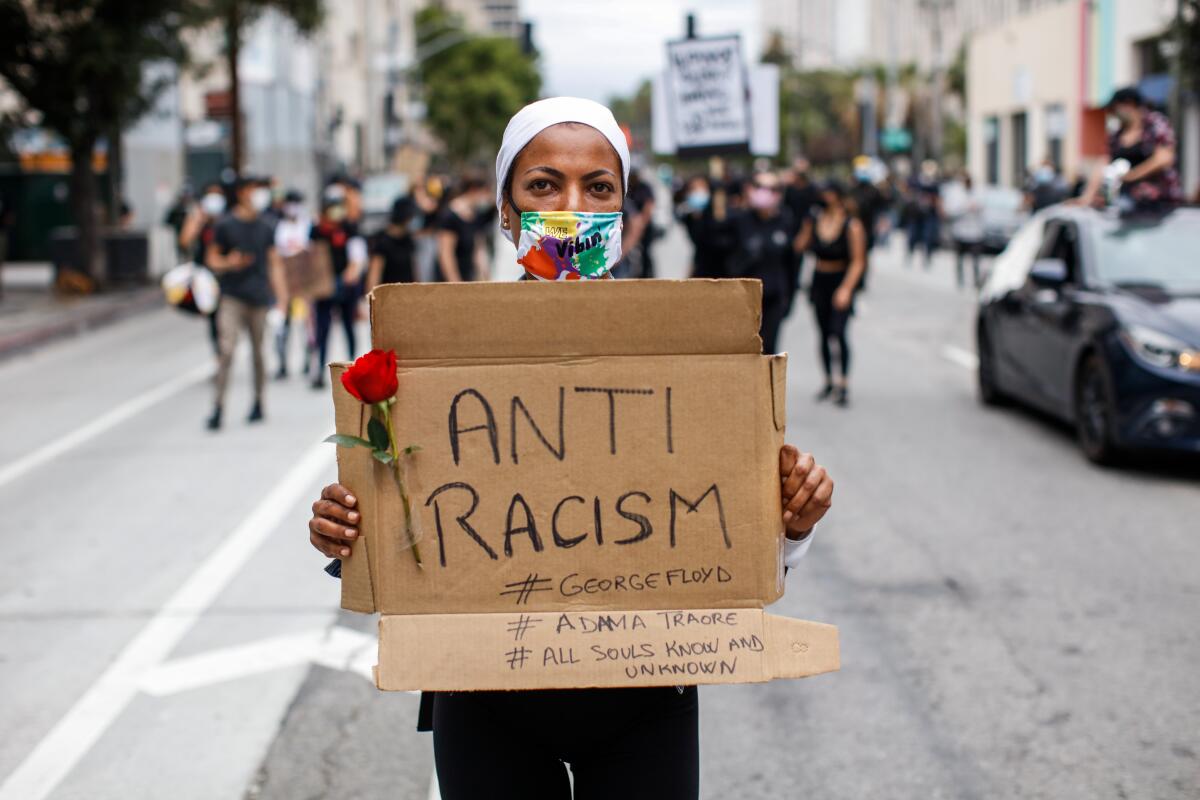
In the wake of the protests, the Philadelphia Museum of Art issued a statement that criticized “destruction of property” and said, “Every individual life matters.” Now five Black employees have issued a counter-statement saying that they were “individually taken aback by the lack of compassion and empathy.”
And SFMOMA disabled comments on a social media post after a former employee, who is Black, criticized the museum for using the work of Black artists to make a statement in support of Black lives, but without accompanying institutional reflection. “You can’t stand behind the work of Black people to do the work you need to do inside,” wrote Taylor Brandon, who left the museum in April.
Enjoying this newsletter? Consider subscribing to the Los Angeles Times
Your support helps us deliver the news that matters most. Become a subscriber.
When barricades went up around the White House, protesters laced them with art: posters, flowers, paintings, signs and photos. Now volunteers have been gathering some of that ephemera to see if it might be preserved in the city’s museums, including the National Museum of African American History and Culture.
Dance has been a major feature of the protests — expressions of which have gone viral via the internet. “At the center of many of these videos are dancers expressing pain and joy,” writes critic Siobahn Burke, “affirming that they are alive.”
Critic Kambole Campbell wasn’t too impressed by all the black squares that popped up on social media in support of the uprisings: “It mostly clogged up social media feeds with plain and meaningless black squares, sweeping away and subsuming more useful content spread via the BlackLivesMatter hashtag.”
Since we’re on the subject of black squares: Greg Allen writes on the history of Kazimir Malevich’s “Black Square” and why abstraction can’t exist outside the world of race and politics.
Faith Ringgold, whose painting of a riot faces a room full of Pablo Picassos at the Museum of Modern Art, had found herself feeling creatively blocked by the pandemic. The uprisings have given the 89-year-old artist renewed vigor: “I’m not done yet.”
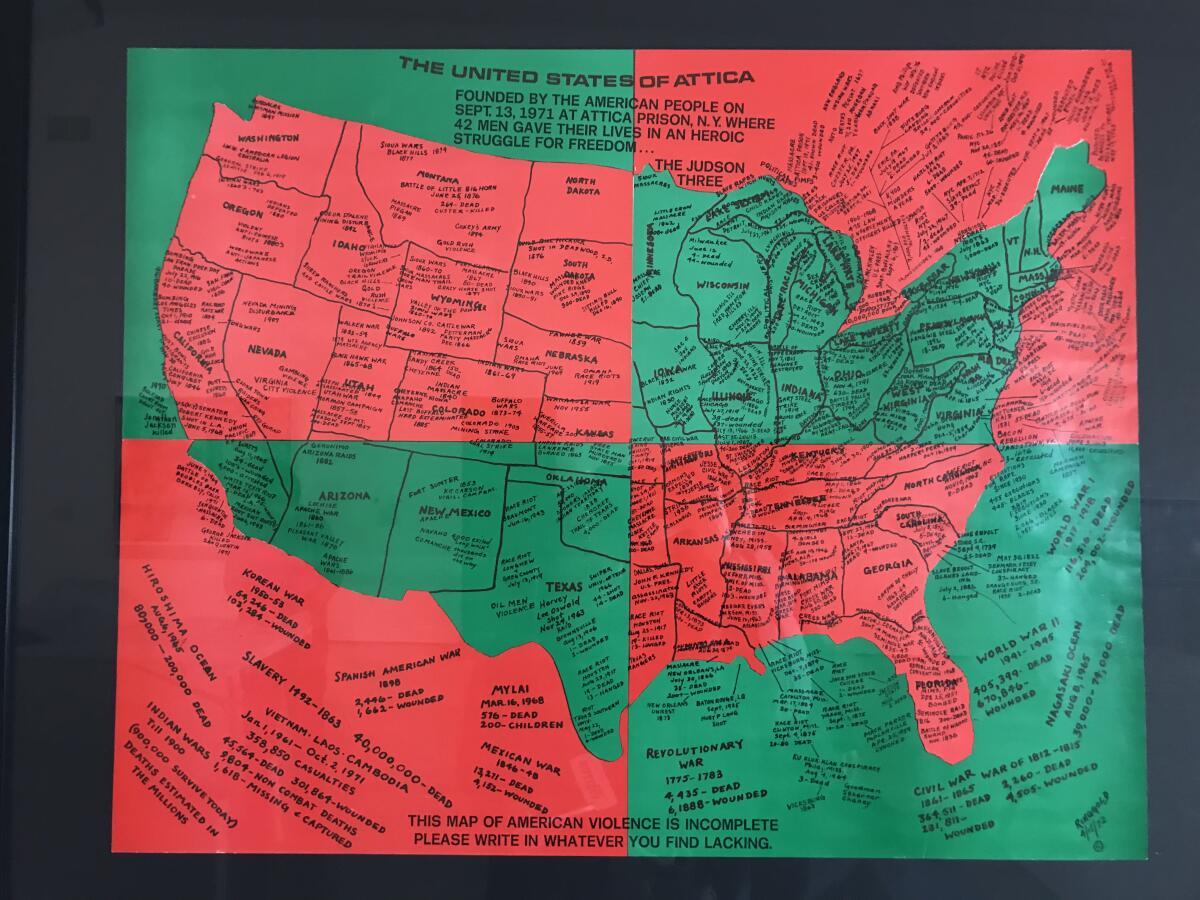
There’s an excellent convo with artist Dread Scott on Tyler Green’s Modern Art Notes podcast. The artist has long engaged issues of racism, police violence and civil rights in his work.
Marcus Anthony Hunter, who coined the hashtag #BlackLivesMatter, led a discussion with a group of L.A. writers about the moment. It’s good reading, and features words from novelist Walter Mosley, poet Luis Rodriguez, novelist and editor Jervey Tervalon, journalist and author Jean Guerrero and historian Gerald Horne.
Monuments men
Confederate statues and colonial monuments have been coming down fast and furious.
In Minnesota, protesters took the head off a statue of Christopher Columbus. In Richmond, Va., a monument to Confederate leader Jefferson Davis was torn down. In London and Bristol, statues of prominent slave traders are now kaput. And, in Antwerp, a statue of King Leopold, the Belgian king whose colonial incursions in the Congo led to the deaths of millions, was removed after being set on fire and spattered with paint.
There are countless other examples. ARTnews has a continually updated list.
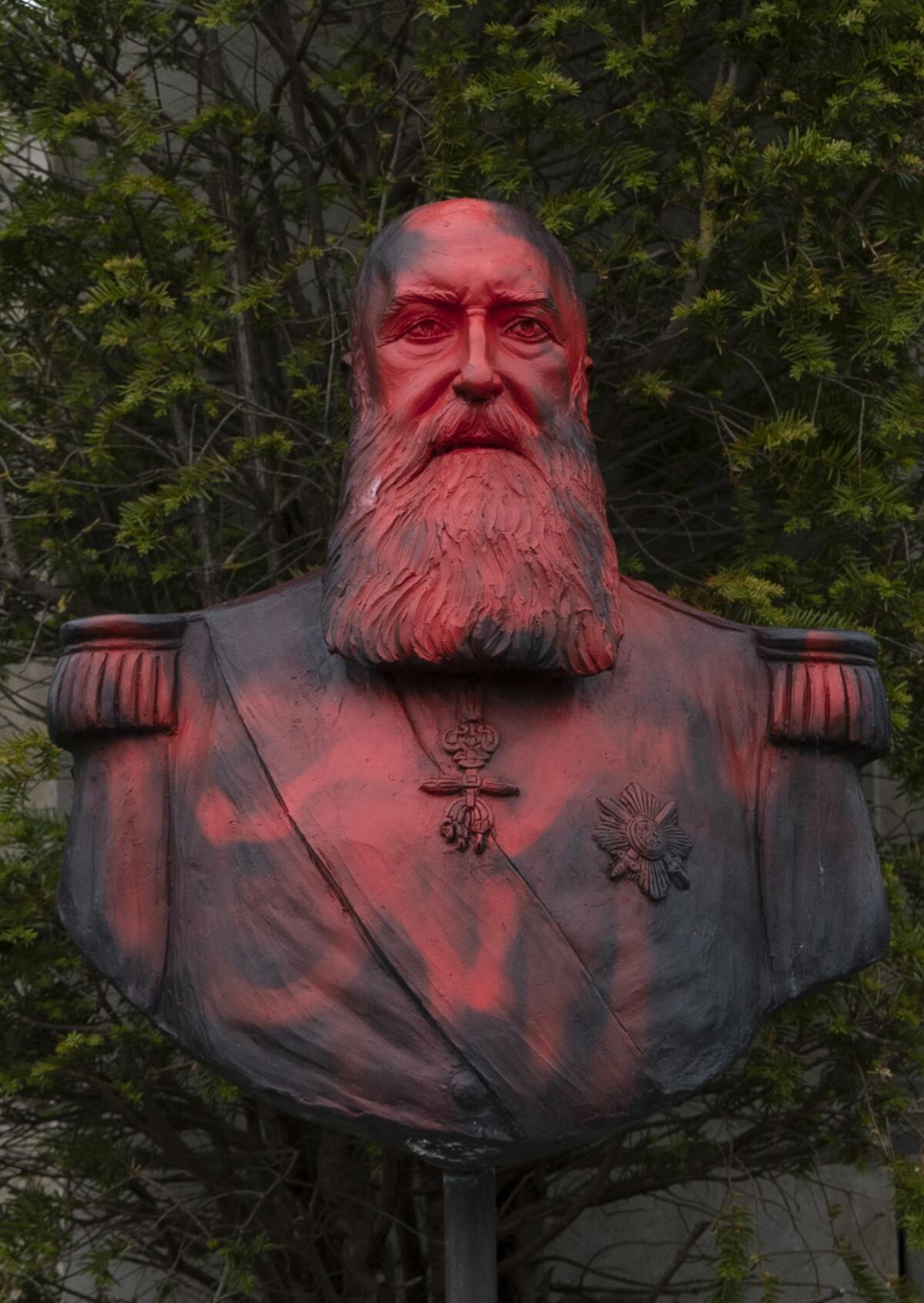
The Tennessee State Capitol, however, is not quite as enlightened, and will be holding on to its bust of Nathan Bedford Forrest, the Confederate Army general who was also the Klan’s first Grand Wizard. It was installed in ... 1973.
Also, for now, Richmond’s statue of Robert E. Lee will remain in place — owing to an 1890 deed produced by a local resident. A judge has ordered that the statue remain in place until the deed is interpreted.
In the meantime, a group has launched a Change.org petition to replace Lee’s monument with a statue of Oderus Urungus (born Dave Brockie), the late lead singer of the heavy metal band Gwar.
Coronavirus and the arts
Remember the pandemic? Its effects are still reverberating throughout the institutions of culture.
Deborah Vankin and Jessica Gelt take a hard look at museum reopening plans. Los Angeles County says museums can begin to reopen, but more than a dozen institutions say they may not reopen for weeks, if not months. As they report: “Many museums said they need time to carefully review and implement the county’s guidelines, which include limiting the number of people allowed on the premises, checking for COVID-19 symptoms such as coughing and fever, and instructing guests to use hand sanitizer and wear face coverings.”

The Huntington is getting ready to open its gates — but just to the outdoor areas. Most of the museum’s 16 themed gardens, covering 130 acres, will be open to the general public starting July 1 by advance reservation and with the usual safety precautions.
The Annenberg Space for Photography is shutting down. The exhibition space, founded by philanthropist Wallis Annenberg a decade ago, has been closed since mid-March due to the pandemic. The Annenberg Foundation says it will redirect those funds toward pandemic recovery, including “public health, food insecurity, economic recovery,” spokeswoman Elizabeth Armour tells The Times’ Deborah Vankin.
In addition, SFMOMA will lay off an additional 55 staff members from departments across the museum.
There’s an interesting piece by Kim Tingley about how post-COVID design can draw lessons already learned by architects designing better spaces for individuals who are deaf or have autism.
As cities begin to reopen and contend with the financial wreckage of the pandemic, they will have to think of new ways to support their communities economically and urbanistically. The CitySpeak podcast has a good interview with Bruce Katz, co-author of “The New Localism,” about that. He makes some interesting points about collective work and how U.S. cities often undervalue their fallow land.
Plus, a few ideas for how cities might be safely reimagined for older, more vulnerable residents.
The best arts online
“Justice too long delayed is justice denied.” Times classical music critic Mark Swed recommends giving this moving excerpt of Oakland-based composer Zachary Watkin’s “Peace Be Till” a good look. The work is inspired by Martin Luther King Jr.’s “Letter From the Birmingham Jail” and features words by Dr. Clarence B. Jones and music by the Kronos Quartet.
Swed tells me that the film has some poignant connections: “The grandfather of the film editor, Evan Neff, a photographer who often works with the quartet, was a carpenter who flew out from San Francisco in 1965 to join the march on Montgomery and who built the stage MLK stood on.”
Helder Guimarães’ hit Zoom performance, “The Present,” staged by the Geffen Playhouse, has been extended for a third time until October. The story, told over a series of magic tricks, touches on the performer’s previous experience with quarantine.
Matt Cooper has the best online happenings, including Liza Minnelli’s concert special (with outfits by Halston!) and the virtual edition of the 74th Ojai Music Festival — which is free to stream through Sunday. After that, nightly streams will be available on-demand.
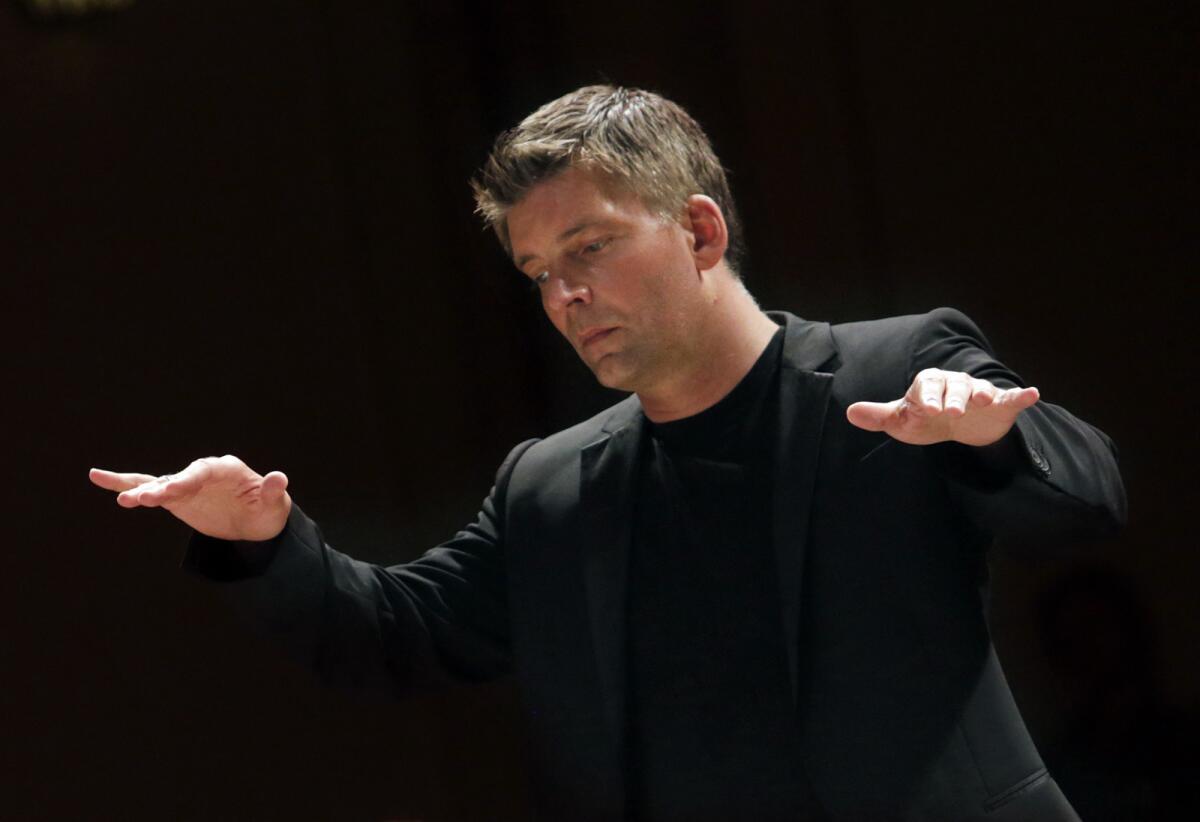
You can find all of our culture listings on our “Things to Do: Arts & Culture” page.
Passages
Lennie Niehaus, a jazz pioneer and film composer — his credits include scores for his old Army buddy Clint Eastwood’s movies, including “Bird” and “Unforgiven” — has died at the age of 90.
Robert Northern, a master of the French horn who migrated fluidly between classical music and jazz, and who in his 20s played on important jazz recordings with Thelonious Monk and John Coltrane, has died at 86.
Tyrone Proctor, a pioneer of the 1970s L.A. dance style known as waacking, which went from underground gay clubs to global phenomenon, has died at 66. Makeda Easter tells his story — about how he got on “Soul Train” by sneaking into the back of the studio lot in someone’s trunk.
In other news
— Archeologists in London have unearthed what is believed to be the city’s oldest theater building, dating to the 1560s.
— There is a petition circulating online to turn Harlem’s Apollo Theater into a Broadway house and it has drawn thousands of signatures.
— Metropolis magazine has a good interview with architect Mabel O. Wilson about her upcoming book on race and Modern architecture, as well as an upcoming exhibition she helped organize at MoMA that will examine blackness and architecture in the U.S.
— A historical look at how the Los Angeles Free Press covered protest and police brutality.
— Artist Sterling Ruby has made a film about the California prison system. Architecture writer Mimi Zeiger interviews him on about the landscape of incarceration.
— A profile of classical music’s newest star: cellist Sheku Kanneh-Mason, all of 21, who became internationally known after his performance at Prince Harry and Meghan Markle’s wedding.
— The next Los Angeles Times book club will feature Walter Thompson-Hernández and his book, “The Compton Cowboys.” My colleague Angel Jennings will host. Excited for this one.
— And, something rilly rilly important: The best houseplant for your zodiac sign.
Last but not least ...
The 1918 flu pandemic devastated Native American communities. Montana-based powwow dancer Rose Bear Don’t Walk keeps alive a dance from the era created to bring healing and hope.
The biggest entertainment stories
Get our big stories about Hollywood, film, television, music, arts, culture and more right in your inbox as soon as they publish.
You may occasionally receive promotional content from the Los Angeles Times.




